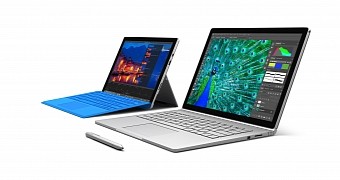Sales of Windows 10 2-in-1 devices continue growing across the world, with a new research conducted by Telsyte revealing that, in Australia, Microsoft’s platform is very close to overtaking Android and then go after Apple’s iOS.
In the second half of 2016, Australians purchased a total of 1.64 million tablets, up 2 percent from the same period the year before, with Telsyte explaining that it was all possible thanks to the performance posted by Windows devices.
Apple’s iPads continue to be the leading choice in the country with 44 percent market share, followed by Android with 29 percent, while Windows is very close with 27 percent. And while Windows is only third in the charts, Microsoft’s operating system is the only one growing, and it does it at a very fast pace, the research shows.
Telsyte says that Windows 10 tablets grew approximately 60 percent in H2 2016 versus H2 2015, while Android and iPad declined 13 and 9 percent, respectively. The difference is huge, and this makes analysts estimate that Windows would soon overtake Android and get very close to iOS.
The touchscreen push
Additionally, Telsyte estimates that Microsoft and its partners would continue the push for devices with touchscreens, so by 2021, at least 10 percent of PCs would have such capabilities.
“Telsyte expects the introduction of larger format, desktop touch computers, such as Microsoft’s Surface Studio to boost an otherwise sluggish PC market which has struggled to give users a reason to upgrade. Telsyte estimates that the average replacement cycle for PCs in Australia has now grown to 4.7 years,” the research shows.
While Microsoft’s continuously pushing for devices with a touch-capable display, Apple prefers not to mix desktops with this technology, saying on several occasions that there are no intentions of creating a MacBook that works with touch.
Instead, Apple wants to stick with the traditional mouse and keyboard input methods, but as history proved several times, the company could change its mind overnight depending on the evolution of the market. It already happened with 2-in-1s and if customers indeed move to touchscreens in the coming years, Apple has no other option than to align its products with the demand.

 14 DAY TRIAL //
14 DAY TRIAL //